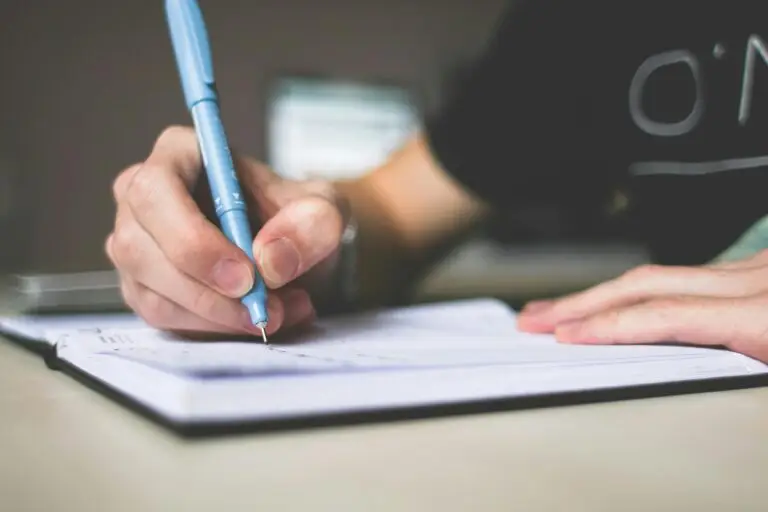laboratory management practice exam Answers

1. What is the most important consideration when handling biohazardous specimens?
Correct Answer: B) Wearing gloves and appropriate protective equipment
Explanation: Safety is the top priority when handling biohazardous specimens. Wearing gloves, lab coats, and PPE reduces the risk of exposure to infectious agents.
Reference: OSHA Guidelines
2. What is an essential component of laboratory quality control?
Correct Answer: D) All of the above
Explanation: Quality control includes equipment calibration, result verification, and proper reagent storage. These steps ensure accuracy and reliability.
Reference: Henry’s Clinical Diagnosis and Management by Laboratory Methods
3. When should a technician perform system maintenance on lab instruments?
Correct Answer: B) Regularly according to the manufacturer’s instructions
Explanation: Routine maintenance keeps instruments working properly and prevents downtime. Always follow the manufacturer’s guidelines.
Reference: Henry’s Clinical Diagnosis and Management by Laboratory Methods
4. What should be done if a sample shows an unexpectedly high result?
Correct Answer: B) Repeat the test or verify the result with another method
Explanation: Unexpected results should always be confirmed. Repeating the test or using an alternative method helps ensure accuracy.
Reference: Henry’s Clinical Diagnosis and Management by Laboratory Methods
5. What is the first step when a chemical spill occurs in the lab?
Correct Answer: C) Notify the supervisor and check the MSDS
Explanation: Always alert your supervisor and refer to the Material Safety Data Sheet for proper spill response procedures.
Reference: OSHA Chemical Hazard Communication
6. Which specimen requires immediate processing to avoid degradation?
Correct Answer: B) Blood cultures
Explanation: Blood cultures must be processed promptly to detect microbial growth before degradation occurs.
Reference: Henry’s Clinical Diagnosis and Management by Laboratory Methods
7. How should you handle a potentially infectious patient sample?
Correct Answer: C) Use PPE and ensure the sample is labeled correctly
Explanation: Proper labeling and PPE use are critical for safety and accurate results.
Reference: CDC Laboratory Safety Guidelines
8. What ensures lab results are accurate and reproducible?
Correct Answer: A) Standardization of procedures and reagents
Explanation: Using standardized methods and consistent reagents leads to reliable, repeatable results.
Reference: Henry’s Clinical Diagnosis and Management by Laboratory Methods
9. What is essential before performing a blood draw?
Correct Answer: C) Clean the site with an antiseptic wipe
Explanation: Cleaning the site helps prevent infection and contamination.
Reference: Henry’s Clinical Diagnosis and Management by Laboratory Methods
10. Why perform calibration checks on lab instruments?
Correct Answer: A) To ensure instruments provide accurate readings
Explanation: Calibration confirms that instruments are functioning and producing reliable data.
Reference: Henry’s Clinical Diagnosis and Management by Laboratory Methods
11. What should be done if a lab instrument malfunctions?
Correct Answer: B) Stop testing and notify the supervisor
Explanation: Malfunctions must be addressed immediately to prevent inaccurate results.
Reference: Henry’s Clinical Diagnosis and Management by Laboratory Methods
12. What is NOT an acceptable method of syringe disposal?
Correct Answer: B) Disposing in a regular trash bin
Explanation: Used syringes should always go into sharps containers—not regular trash—to prevent injuries.
Reference: OSHA Bloodborne Pathogens Standard
13. What is the function of a centrifuge?
Correct Answer: B) To separate substances based on density
Explanation: A centrifuge separates components like plasma and red cells using centrifugal force.
Reference: Henry’s Clinical Diagnosis and Management by Laboratory Methods
14. Which statement about lab quality control is TRUE?
Correct Answer: B) It helps identify and correct testing errors
Explanation: Quality control processes detect and resolve errors to ensure test accuracy.
Reference: Henry’s Clinical Diagnosis and Management by Laboratory Methods
15. What is the primary concern when using liquid nitrogen?
Correct Answer: B) Risk of cryogenic burns
Explanation: Liquid nitrogen is extremely cold and can cause serious burns on contact.
Reference: OSHA Cryogenic Safety Guidelines
16. How should a mislabeled sample be handled?
Correct Answer: B) Report it and request a new, properly labeled sample
Explanation: Mislabeling can lead to errors. Always request a new sample for accuracy.
Reference: Henry’s Clinical Diagnosis and Management by Laboratory Methods
17. What sample is most commonly used for microbiological culture?
Correct Answer: A) Blood
Explanation: Blood cultures help detect bloodstream infections and are commonly used in microbiology.
Reference: Bailey & Scott’s Diagnostic Microbiology
18. What is the most important step in preventing culture contamination?
Correct Answer: A) Using sterile equipment
Explanation: Sterile tools ensure valid results by preventing contamination.
Reference: Bailey & Scott’s Diagnostic Microbiology
19. What method is most commonly used to sterilize lab equipment?
Correct Answer: B) Autoclaving
Explanation: Autoclaving uses steam and pressure to effectively sterilize instruments.
Reference: Henry’s Clinical Diagnosis and Management by Laboratory Methods
20. What does a lab safety officer do?
Correct Answer: B) Ensures safety protocols are followed
Explanation: The safety officer trains staff, enforces rules, and ensures a safe work environment.
Reference: OSHA Safety Guidelines
21. When should lab technicians wear PPE?
Correct Answer: B) During all testing and while handling samples
Explanation: PPE should always be worn when working with samples or hazardous materials.
Reference: CDC Laboratory Safety Guidelines
22. How can cross-contamination in lab tests be prevented?
Correct Answer: D) Both A and B (use of disposable pipettes and sterilizing equipment)
Explanation: Proper pipetting and sterilization help avoid contamination between tests.
Reference: Henry’s Clinical Diagnosis and Management by Laboratory Methods
23. How should blood specimens be stored if not processed immediately?
Correct Answer: B) In a refrigerator, unless otherwise specified
Explanation: Most blood samples should be refrigerated to prevent degradation.
Reference: Henry’s Clinical Diagnosis and Management by Laboratory Methods
24. Why use a positive control in lab testing?
Correct Answer: A) To verify that the test system works correctly
Explanation: A positive control confirms the test is functioning by producing expected results.
Reference: Henry’s Clinical Diagnosis and Management by Laboratory Methods
25. What should you do if the wrong reagent is used?
Correct Answer: B) Discard results and restart the test
Explanation: An incorrect reagent can invalidate results. Restarting ensures accuracy.
Reference: Henry’s Clinical Diagnosis and Management by Laboratory Methods
